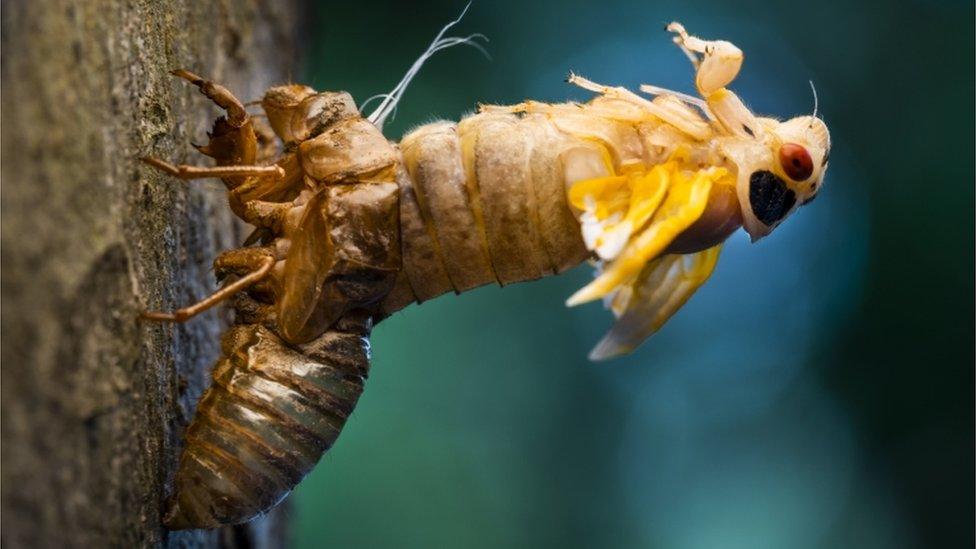Brood X cicadas: Billions of cicadas emerge after 17-year hibernation
- Published
- comments

After 17 years of hibernating underground, billions of Brood X cicadas have emerged on the east coast of America.
The extraordinary insects have been pictured shedding the protective shell that they had during hibernation in 18 US states, including Michigan and West Virginia.
As many as 1.5 million of the insects have come out of the ground per acre of land, meaning that tens of billions in total have emerged.
The Brood X cicadas are famous for the incredible level of noise they make to attract a partner - similar to that of a motorcycle.
Interesting Brood X cicadas facts
The cicadas are some of the longest-living insects in the world, but spend almost their entire lives underground and feed on tree roots for periods of 13 to 17 years.
Even though they only live as adults for two to four weeks, they feed on young trees and vines, and can cause significant damage in the process.
The species make up 15 separate "broods", with Brood X (meaning ten) emerging now as part of its 17-year cycle.
When they come to the surface, they build mud tubes - called a cicada hut - in the soil and crawl out to find a place to moult into their winged adult form.
One of the main reasons why they come out of the ground is to mate. The male cicadas are really loud and attract the females by vibrating - which creates a sharp buzz singing noise.
Scientists have measured the noise and think it's a similar level to a motorcycle.
Even though they come out in their billions they aren't harmful to humans.
Instead they can be a useful food source for animals and birds.
Humans can eat cicadas if they want to, because the insects are edible and are a really good source of protein.
And don't confuse cicadas with locusts - plagues of locusts can devastate crops and cause many problems in some parts of the world.
Scientists aren't completely sure why cicadas emerge in these specific time frames but some think it could be to help avoid predators.
- Published11 February 2019
- Published21 July 2019
